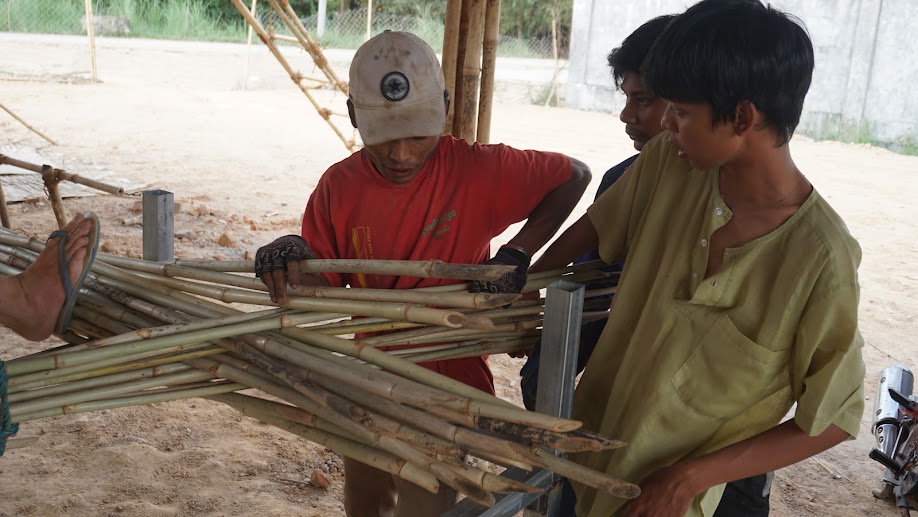
Exploring Low-Tech, Sustainable Construction Methods and Manual Strategies for Community Empowerment
The use of bamboo in construction is emblematic of an ongoing tension between traditional knowledge and the global imperatives of sustainable development. Despite its traditional use in many regions, the potential as a resilient, self-sustaining construction material remains largely underexplored in the contemporary architectural discourse, especially in terms of its structural performance and ease of construction for self-building communities. This research seeks to explore the untapped possibilities of bamboo in structural design, asking: How can manual construction techniques with locally harvested bamboo provide alternative pathways for creating resilient and innovative structures within communities facing economic and environmental constraints?
By experimenting with the material’s unique properties—such as bundling, splitting, and bending—this research aims to expand the architectural possibilities for bamboo, using prototypes to test structural performance and geometric innovation. A case study of a low-cost housing initiative in Myanmar, using bamboo as the primary material, demonstrates the practical viability of these methods. By empowering local communities with sustainable construction techniques and locally sourced bamboo, the project highlights how such approaches can address urgent housing needs in areas facing environmental and socio-economic challenges.
The overarching aim of this thesis is to formally validate manual, low-tech bamboo construction assemblies as structurally sound alternatives, creating the rigorous data foundation necessary for both immediate community-led application and future high-tech fabrication.
To address the labor-intensive nature of traditional split bamboo preparation, several manual tools were developed and prototyped.
Based on the conceptual framework, this thesis proposes the following hypothesis: Rigorous experimentation with low-tech, manual bamboo construction techniques—specifically, bundling, splitting, and bending—will validate their structural performance and geometric innovation potential, thereby providing the essential quantitative data needed to inform future high-tech fabrication advancements and empower local communities to autonomously build resilient and sustainable solutions.
The C&S system offers significant advantages for emergency and disaster relief architecture, where speed of erection and reliance on accessible materials are paramount.
The C&S system offers significant advantages for emergency and disaster relief architecture, where speed of erection and reliance on accessible materials are paramount.
Design Iterations
Future prototypes must include instrumentation (e.g., strain gauges) to empirically measure the magnitude of the active forces during installation. This data is necessary to validate the joint’s required capacity and to refine the predictive accuracy of the digital models.
Research should explore methods for semi-automating the synchronized thermal bending process to reduce the reliance on intensive manual labor and ensure geometric uniformity across hundreds of required segments.
Faculty: Valentino.Tagliaboschi, Marielena Papandreou

